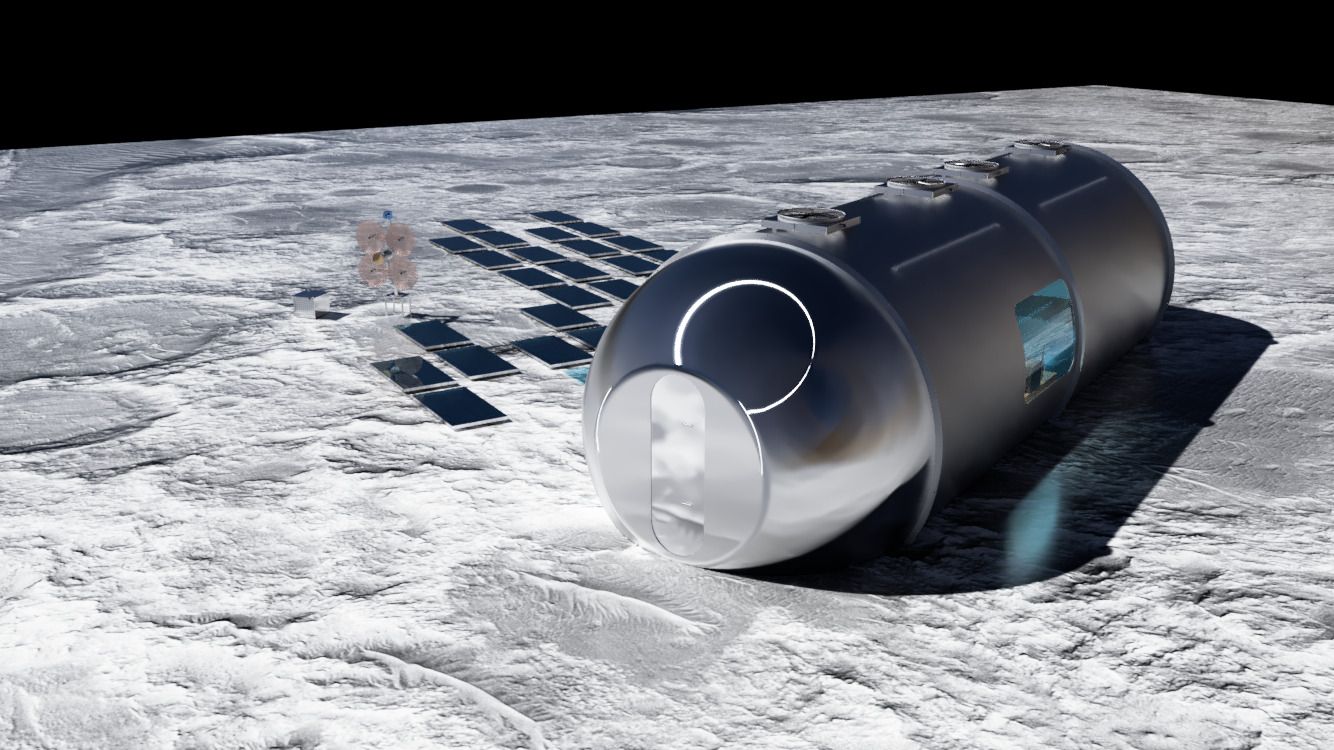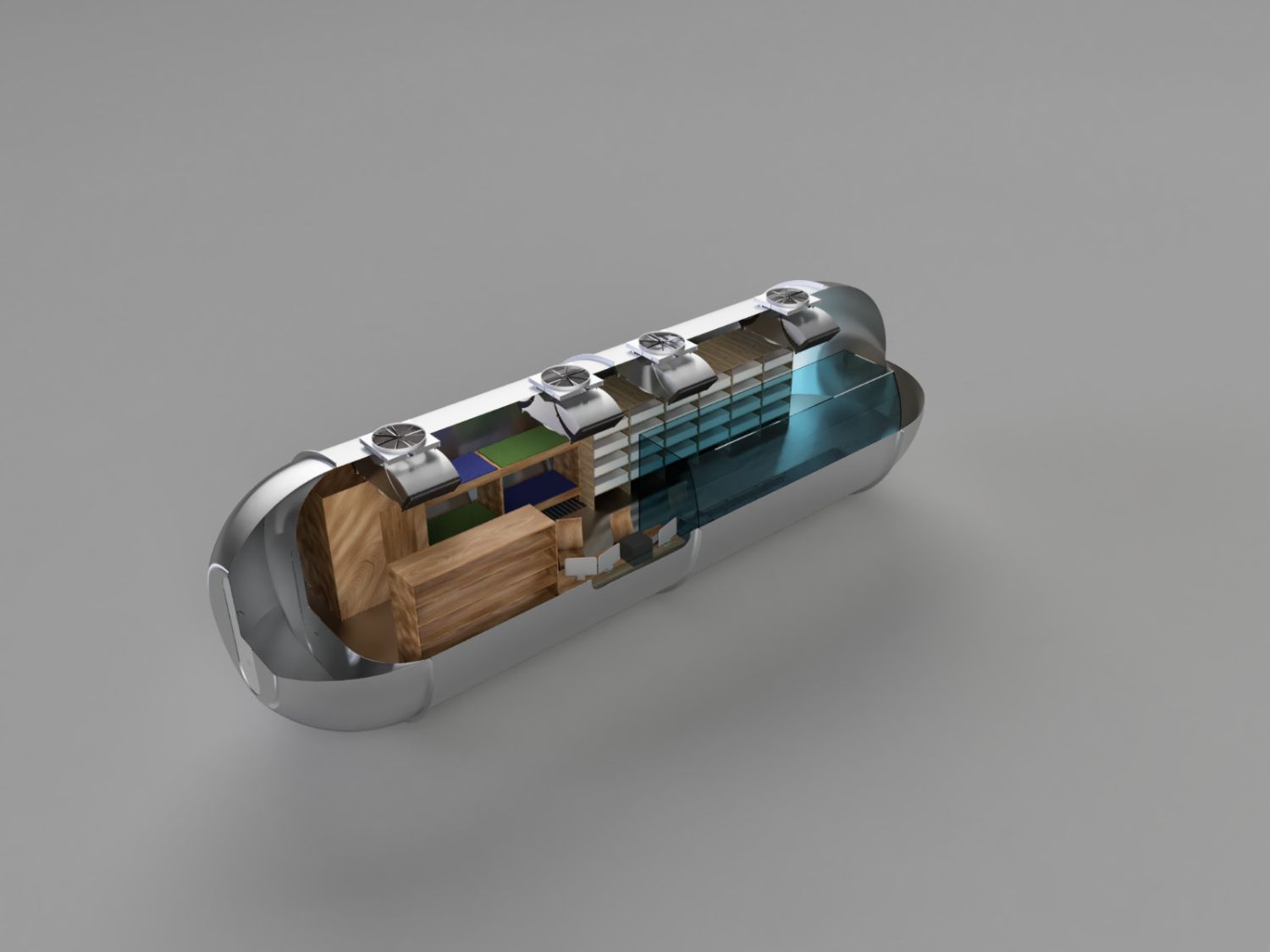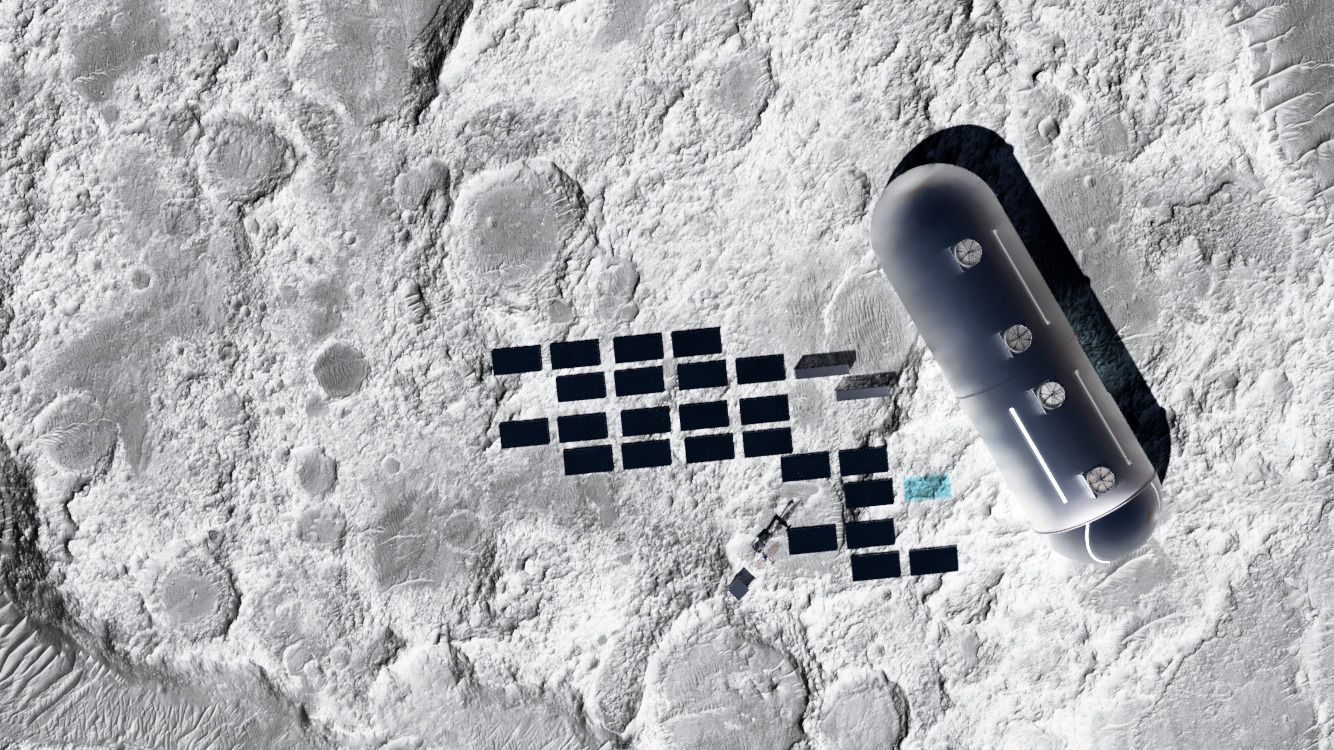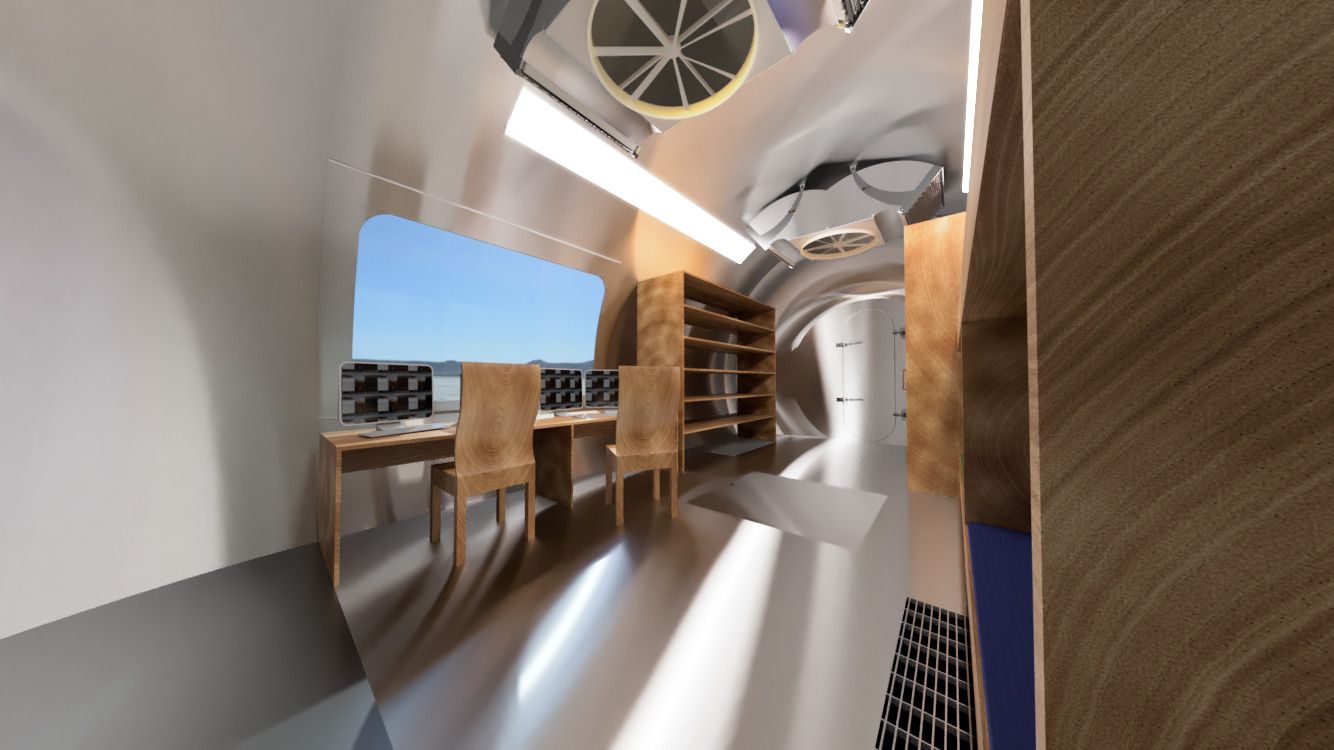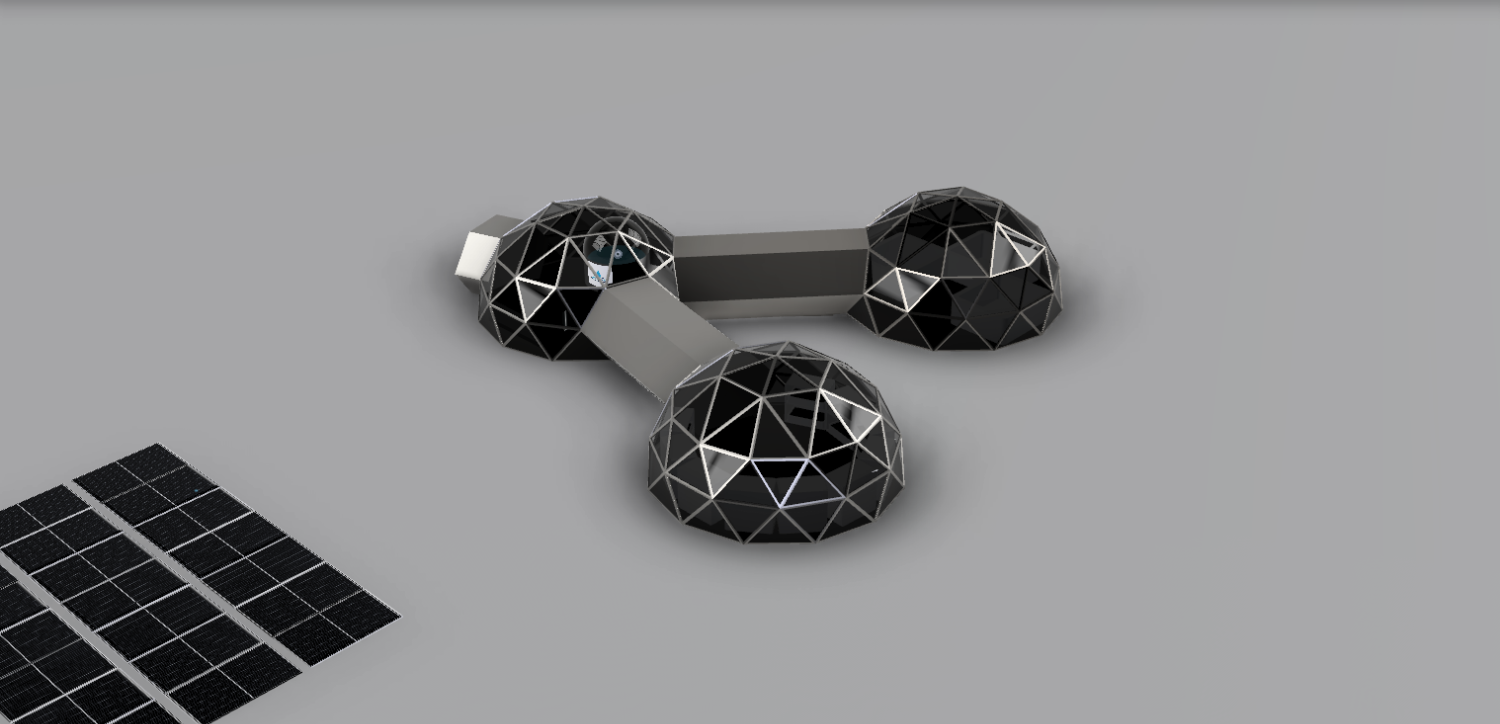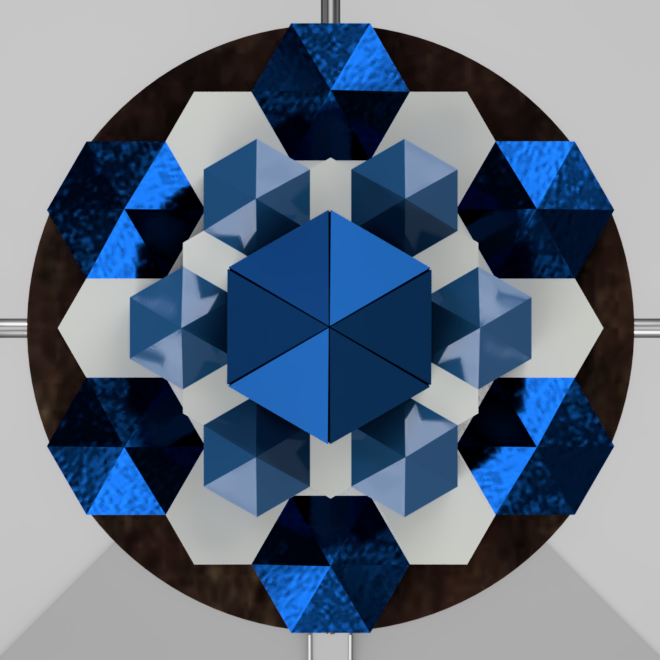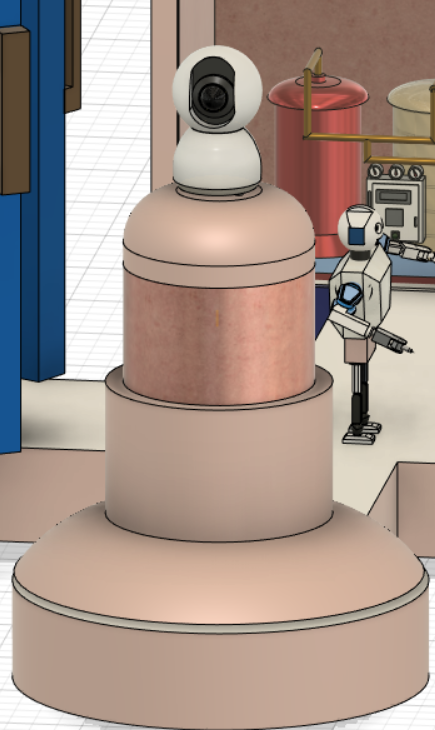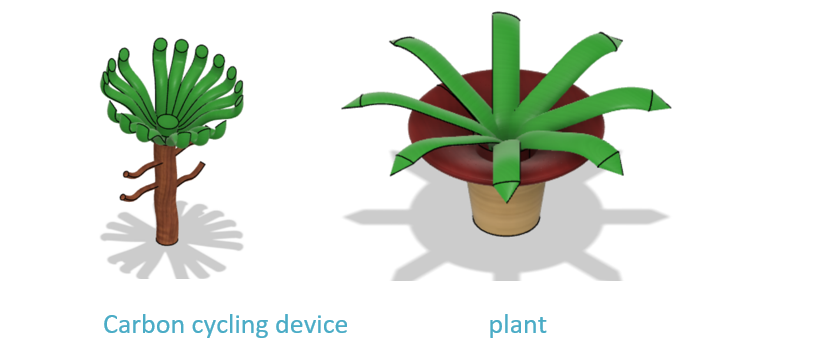Moon Camp Pioneers Gallery 2021-2022
In Moon Camp Pioneers each team’s mission is to 3D design a complete Moon Camp using Fusion 360. They also have to explain how they will use local resources, protect astronauts from the dangerous of space and describe the living and working facilities.
Team: Elemental Aerospace
Liceul Teoretic Benjamin Franklin Bucuresti Romania 17 2 / 0
External viewer for 3d project
|
Project description
The project we have designed for the Moon Camp Challenge is a moon base module, with a cylindrical shape featuring an external diameter of 5.2m, that is designed to fit in the next-gen Ariane 6 launcher built by Arianespace on behalf of ESA. The module has a usable living area of 34 m^2, which features a mostly wooden, comfortable interior design, and includes all necessary life-support systems: power generation and storage using solar panels and batteries respectively, O2 storage and CO2 scrubbing, water storage and recycling, food storage and electrically-powered heating/cooling systems. Another module separate to the main one can be used for growing plants – the aquaponics module. It is used to grow fish and plants in a sustainable way. The base also incorporates a two-mode communications system: a low-bandwidth 2.2 GHz microwave link used for telemetry, voice and emergency comms, and an optical link via satellite for high-bandwidth applications (video streaming) that can reach a downlink speed of 600 Mbit/s. |
|||
|
2.1 Where do you want to build your Moon Camp?
We want to build the Moon Camp on a plain area, where the terrain lacks craters and other small deformations, but where there is a natural cave in relative proximity, on the near side of the Moon. Building in a plain terrain is easier, and provides space for future expansion. An emergency module will be placed in the natural cave, for use as a shelter in case of meteorites. The near side of the Moon was chosen because it is illuminated by the Sun, and because it faces the Earth. Sunlight is used by the photovoltaic panels to generate power, and the astronauts’ activities are enhanced by the presence of light. The base being on the side facing Earth also benefits communications, the antennas being directed directly towards the planet (or towards a satellite in the case of the optical link). 2.2 How do you plan to build your Moon Camp? Describe the techniques, materials and your design choices.
We plan to build our Moon Camp using pre-built modules transported from Earth using Ariane 64 rockets. The maximum mass of a module will be 8.6t, the maximum payload of A64 to Lunar Transfer Orbit (LTO). Alongside the main module, multiple other modules can be added in order to form the Moon Camp. The solar panels, antennas and other external devices will be mounted on the lunar surface, next to the base. The main material is aluminum alloy 6061 with a few ABS and carbon fiber parts, alongside other materials in small amounts, such as steel bolts, rubber gaskets, etc. The modules(s) will be placed inside a 1.2m-deep excavation into the lunar surface, in order to prevent the module(s) from unwanted movements or rotation. They will be manipulated and placed by cranes and can also be moved by being rolled in place. The cranes and other machinery necessary for manipulation can be brought in a separate anterior mission or with a secondary rocket in the same mission. An impact wrench is also necessary to connect two modules together and the ends of the modules. The modules will be pressurized after completion and depressurized prior to any modification. The window panel will be transported unmounted in a secure container as to not damage it during the assembly and shipping. 2.3 The environment on the Moon is very dangerous for the astronauts. Explain how your Moon Camp will protect them. (maximum 150 words)
The Moon Base modules’ heating/cooling system will provide a good temperature for living. The O2 storage system and CO2 scrubber will keep oxygen flowing through the modules and will collect excess CO2. The modules’ walls will protect the astronauts to a certain degree from cosmic radiation, this can be improved by adding soil on top of the walls of the modules, and the aviation-grade aluminum alloy 6061 can protect the base from small impacts. The body of the modules can handle 3 atm of pressure, based on a simulation. The base is also equipped with an aquaponics system that can maintain a supply of food, even if the resupply missions are affected severely. The main window is a glass/plastic pane that protects the crew from the possible shattering of the glass. |
|||
|
2.4 Explain how your Moon Camp will provide the astronauts with:
|
Water
|
Food
|
Power
|
Air
|
|
The base will provide water to the crew using the water recirculation system (a similar system to the one used on the ISS) by filtering the used water using a special assortment of filters, making it self-sustainable. It can also transform urine into drinkable water. The water system consists of a main tank underneath the module’s bathroom and an emergency water supply, consisting in the fish tank of the aquaponics module. Water can also be extracted as condensation from the air conditioning system, with the included collectors of the AC. |
Food will be mainly stored near the oxygen tanks under the floor of any module. The food will mainly consist of dried products that can be rehydrated with water. The main way of making food will consist of the aquaponics system that will grow fish, seafood and algae alongside other vegetables and herbs in a symbiotic manner. The waste from the fish tank will be used as natural fertilizer for the growing of the vegetables; the nutrients and oxygen provided by the plants will be used for the aquarium. |
The power system consists of photovoltaic panels, rechargeable batteries and the corresponding electronics. The system uses 22 455-watt panels that can generate up to 10 kWp total power, and 16 lithium-based LiFePO4 cells, that are deposited in a secured container. The battery technology was chosen because it is very safe compared to the other chemistries, at the expense of more weight. The cells have a 3.2V nominal voltage, and together have an energy of 48 kWh. Adding on, the system also has different conversion and management electronics, such as the inverter and BMS, that are used for converting DC to AC, and protection of the batteries respectively. |
The base has an electrically-powered air conditioning system that also scrubs the air of CO2. The filters are all replaceable and easy to remove, with a toolless design. Under the floor of every module, there are six oxygen tanks that are controlled by the main Electronic Control Unit (ECU) of the module, sensing oxygen levels and compensating when necessary. Also, the control unit verifies the internal pressure of the module. The system makes sure that the optimal level of O2 is maintained in the base, protecting the health of the astronauts. |
|
2.5 Explain what would be the main purpose of your Moon Camp.
Our Moon Camp can serve all three purposes: commercial, scientific and tourist, because it is modular and it can be provisioned as needed. In its default configuration, the Moon Camp will be initially provisioned for scientific purposes. Using a Lunar rover, a multi-functional construction and scientific tool, we can transport and manipulate materials for further expansion of the Lunar base for all needed purposes. |
|||
|
3.1 Describe a day on the Moon for your Moon Camp astronaut crew.
The astronauts wake up on their wooden bunk beds and they do their morning routines, including eating, hygiene, and health monitoring, the wooden interior of the base hopefully giving them a sense of comfort and homeliness. Then, they check the status of core systems needed for the Moon Camp operations such as the power system, air system, water system and the aquaponics system. These checks include, cleaning the solar panels (part of the power system), monitoring oxygen levels, CO2 levels and pressure in the base, checking water PH and oxygen levels from the aquaponics system as well as the nutrient contents found in the soil. Each crew member must do at least 30 minutes of exercising inside, or take a walk of the same period outside the base, in order to prevent muscular atrophy. After the initial checkups, the team from the lunar base will contact the command center on Earth in order to report the situation onboard and to request information about the research missions they need to perform. At least 2 crew members will remain at all times on board, supervising the operation of critical systems and keeping the security of the base. The rest of the astronauts may do various tasks such as exploring the lunar soil, creating new bases with the help of 3D printing, run experiments on growing plants and animals on the lunar surface with the help of the aquaponics system, run experiments on the lunar soil itself, conduct mining operations for industrial reasons or research, and in the future, even conduct tours and act as a base for future missions further in the solar system. At the end of the day, all personnel will return to the base, pack any tools or instruments left outside the base, eat, and enjoy some free time. They can talk to their families or friends on Earth, watch videos or media pre-downloaded on the internal server search and publish documentation and many more using the high-bandwidth communication system. |
|||


